Jaipur is famous for its pink buildings and for its hillside forts with colourful doorways. The long, stone Amer Wall on top of the surrounding mountain ridge adds an interesting feature to the incredible vista.
Pink City is the nickname for the Old Town of Jaipur. It’s surrounded by a tall, pink sandstone wall (it’s actually peach) with seven large decorated gates. The gates are now used by cars but are tall enough to have once allowed elephants to enter.

Gate on the Pink City Wall 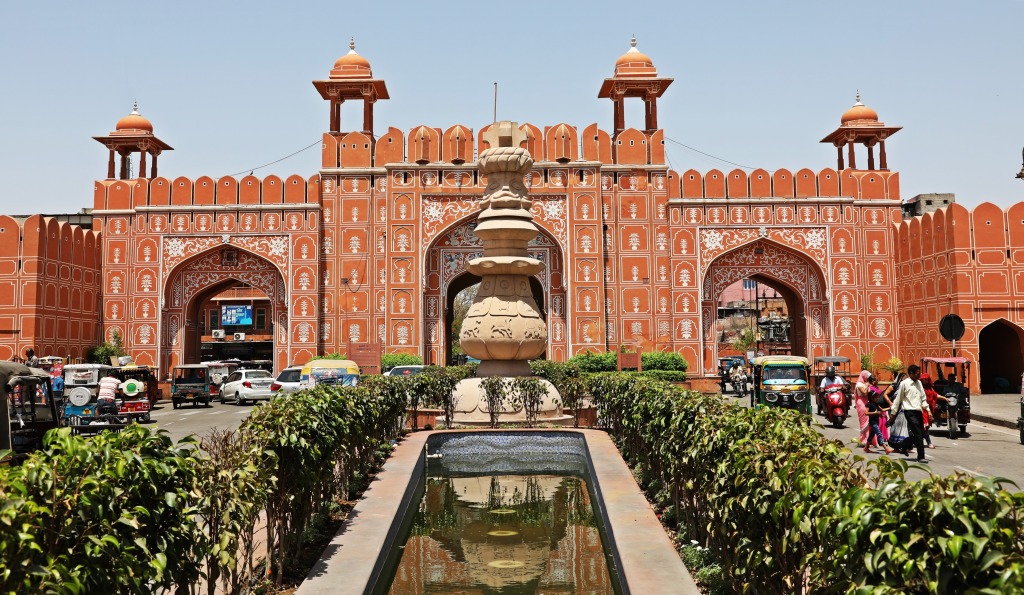
Gate on the Pink City Wall 
Entrance Gate to Pink City, Jaipur
At one corner of the wall is the iconic image of Jaipur, Hawa Mahal. It’s stunning a 5 story, skinny pink building, entirely fronted by bay windows. It’s five stories are successively smaller and each is filled with rounded windows that give it the appearance of a honeycomb. The building is made of pink sandstone and each of the 953 windows have carved lattice designs. The Maharaja built Hawa Mahal as a place where the palace women could watch city life outside of the palace. The lattice protected the women from being seen, but also allowed a breeze to pass through, keeping the rooms cool in the hot Rajasthani summers. Seeing it from the side, we could see how skinny it is. The building is only one room wide as its only purpose was to be a frame for the windows. It was very hot when we were in Rajasthan, and especially in Jaipur. Richard liked to say it was like walking in a pizza oven. It would have been nice to have a shaded area with a constant cooling breeze like Hawa Mahal.

Hawa Mahal, Jaipur 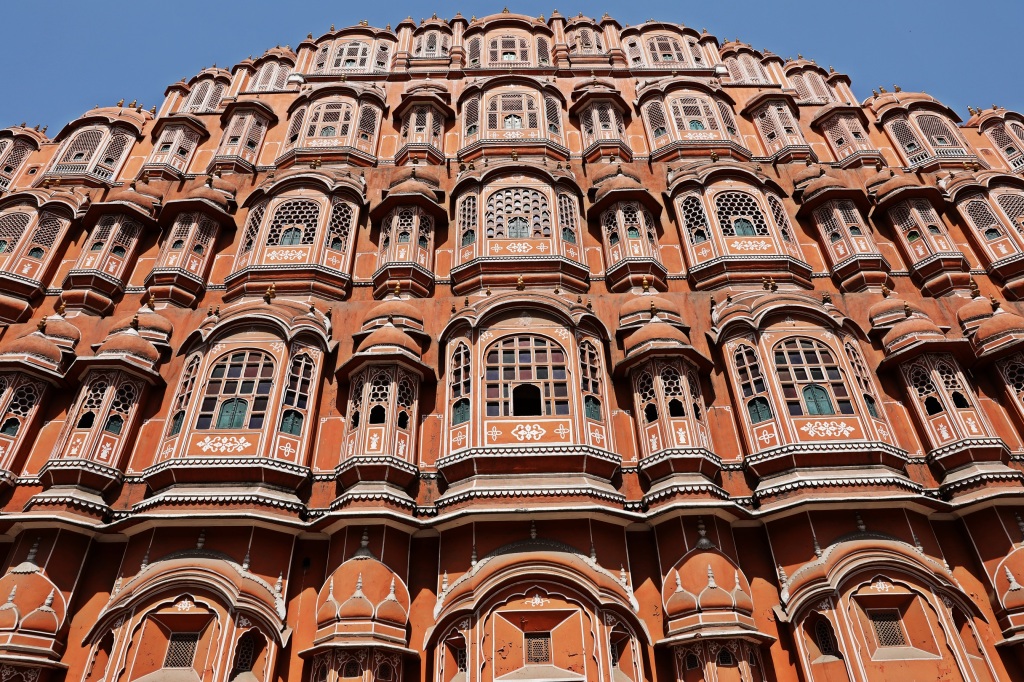
Hawa Mahal, Jaipur 
The thin Hawa Mahal, Jaipur 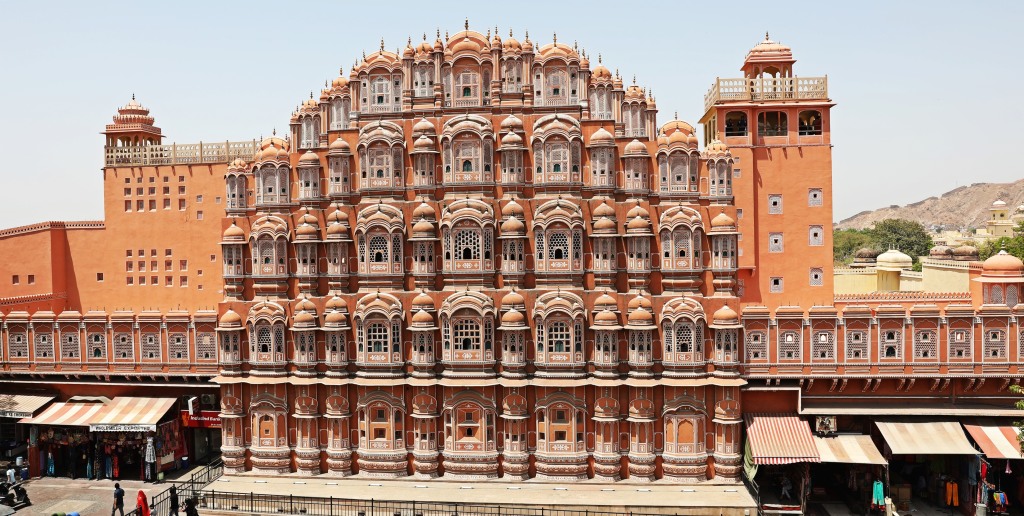
Hawa Mahal, Jaipur
Between Hawa Mahal and the City Palace you pass through a few elaborate old gates. The outside of the palace is rather plain, but the palace’s interior is very impressive. There are many lovely courtyards with decorated pavilions and halls with ornate decorations and furnishings. The palace was home to Maharajas for over 200 years and each added their own rooms and designs. One courtyard, Pritam Niwas Chowk, has four stunning doorways, beautifully painted with designs representing each season. Peacock Gate is the most popular and represents autumn; Rose Gate is for winter; Green Gate represents spring and Lotus Gate is for summer. We think they are the most ‘Instagrammed’ spots in Jaipur. We had to wait a long time for the selfie takers to move on. Another courtyard has a large Hall for Public Audience, with pink columns leading to arches on the pink ceiling. A Maharaja from a more recent century built an indoor Hall for Public Audience. It’s a regal room with large chandeliers and elaborate moldings. From the palace you can see part of Amer Wall, that surrounds the Kingdom of Jaipur, and one of the many forts that are built along it.

City Palace Gate, Jaipur 
City Palace Gate, Jaipur 
City Palace, Jaipur 
Mubarek Mahal, City Palace, Jaipur 
Rajendra Pol (Gate), City Palace, Jaipur 
Pritam Niwas Chowk, Peacock Gate, City Palace, Jaipur 
Pritam Niwas Chowk, Rose Gate, City Palace, Jaipur 
Pritam Niwas Chowk, Green Gate, City Palace, Jaipur 
Pritam Niwas Chowk, Lotus Gate, City Palace, Jaipur 
City Palace, Jaipur 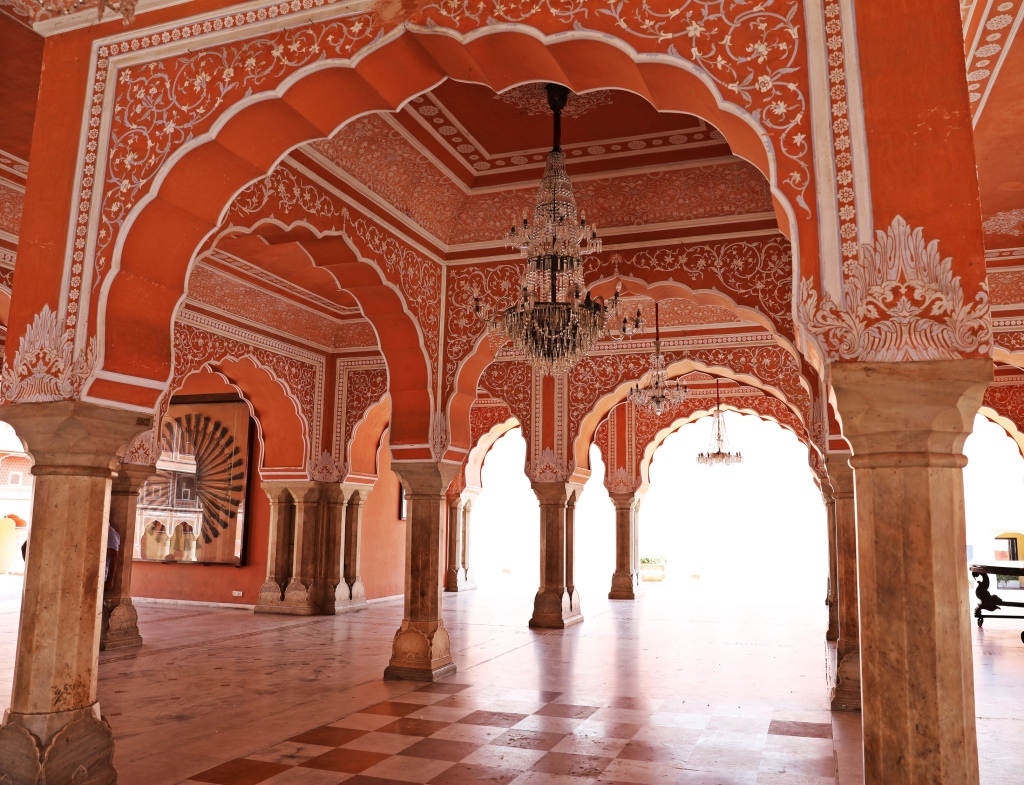
Sarvato Bhadra, i Khas, City Palace, Jaipur 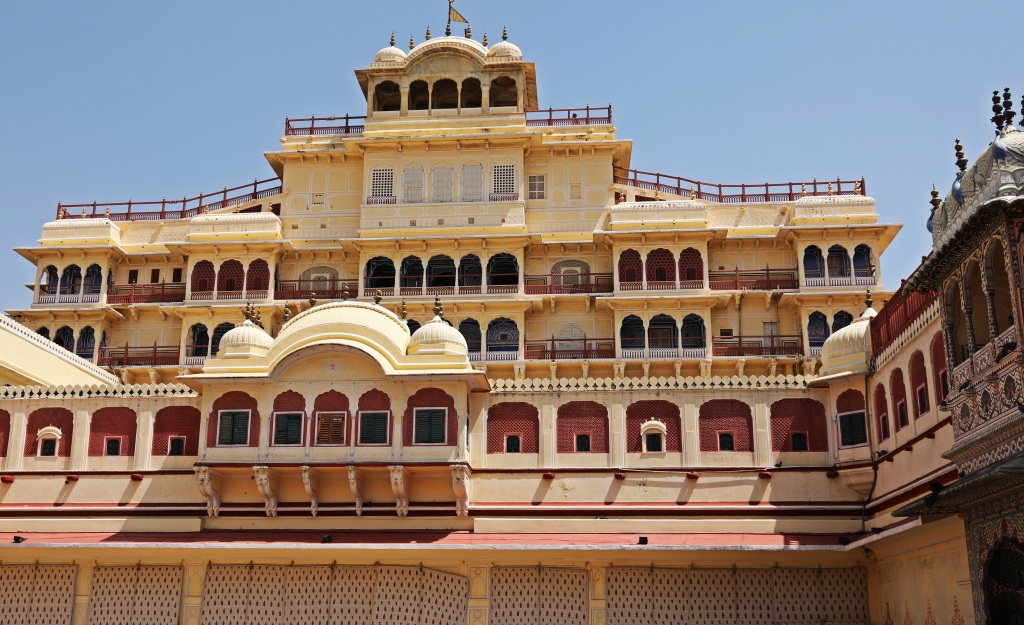
Chandra Mahal, City Palace, Jaipur 
Diwan-I-Aam,City Palace, Jaipur
Inside Jaipur’s pink wall are the remains of the Pink City. Many of the old buildings are gone, but there is an old market which covers several city blocks. The buildings of the market are also pink and have covered, narrow sidewalks with small shops along the sides. The shops are grouped together by their products. One section sells silver another sells bicycles. Further on is a section with hardware and another with clothing. It was a great place to people watch as many of the local Rajasthanis come here to shop.

Pink City Market, Jaipur 
Pink City Market, Jaipur 
Pink City Market, Jaipur 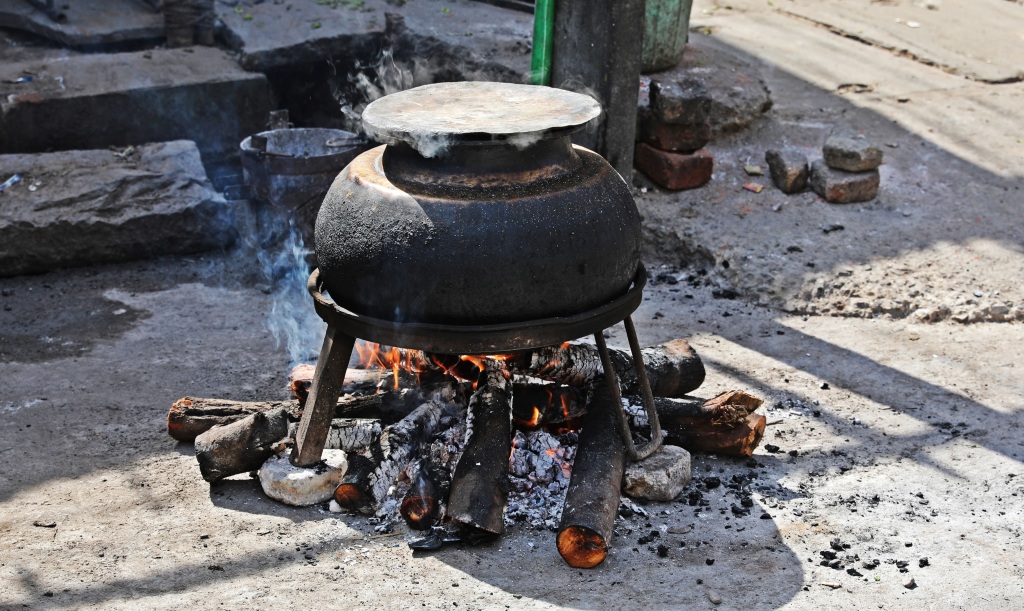
Family cooking breakfast on the street, Jaipur 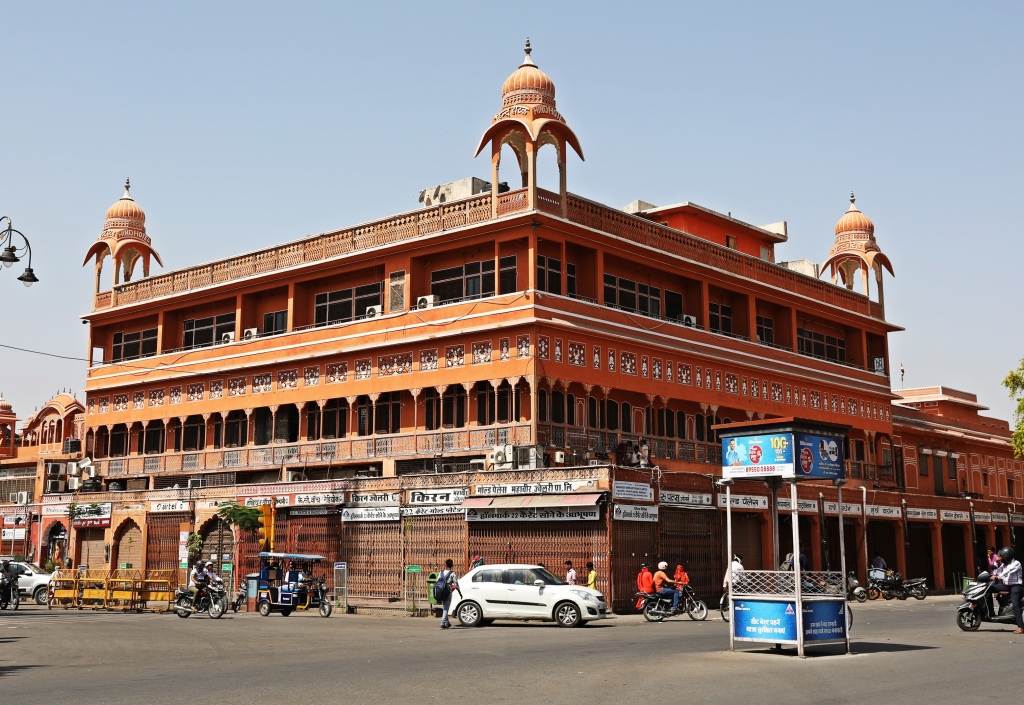
Hind Hotel, Jaipur 
Minaret, Jaipur 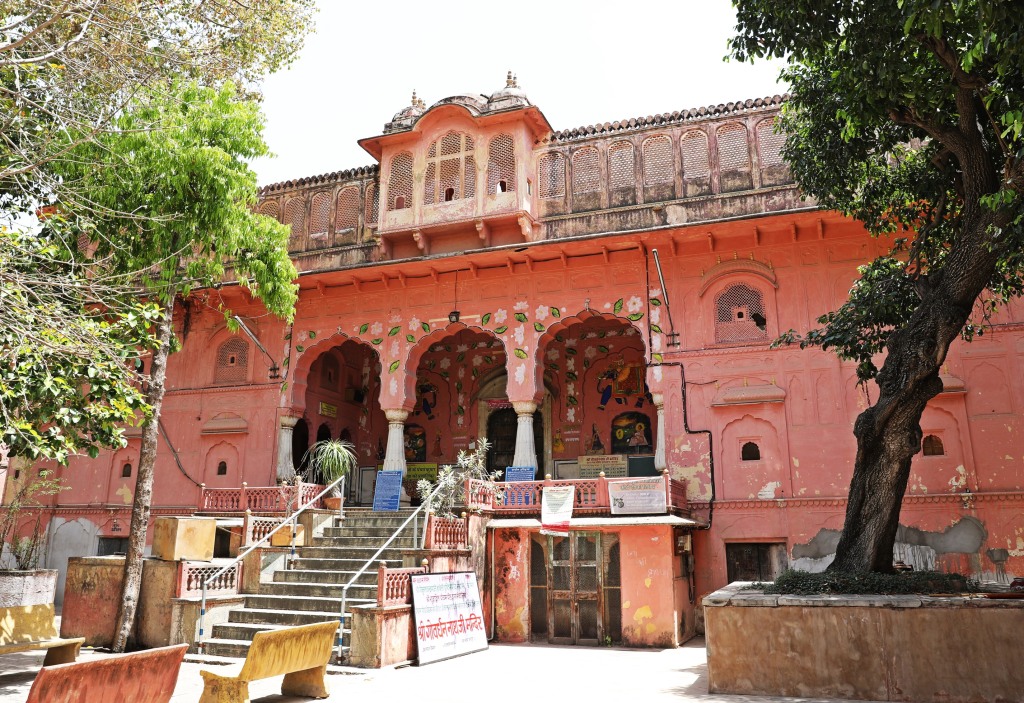
Rajasthani architecture, Jaipur 
Market, Jaipur 
Shirt salesman, Pink City Market, Jaipur
Albert Hall Museum is set on a busy intersection just outside of the Pink City. It’s a lovely building built in the Indo-Saracenic architectural style. It has arched windows and doorways and a multi-level roof with large chhatris. In front is the statue of one of the last Maharaja of Jaipur.

Albert Hall Museum, Jaipur 
Central Museum, Jaipur 
Sawai Man Singh Statue, Jaipur
On the outskirts of Jaipur is the imposing looking Amer Fort (also spelled Amber). Built in the 16th century, the royal family lived here before moving to City Palace in Jaipur city. Situated part way up a hill, the red sandstone fort shines brightly in the morning sun. To get into the fort, you can either walk up a winding sidewalk or ride up on an elephant. We chose to walk but did enjoy the site of elephants entering through the decorated Sun Gate.
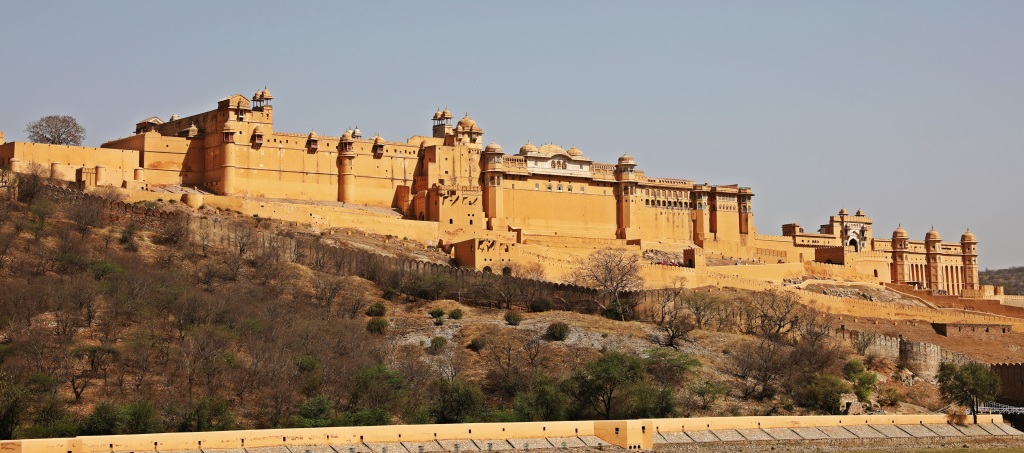
Amer Fort 
Amer Fort 
Amer Fort 
Gardens below Amer Fort 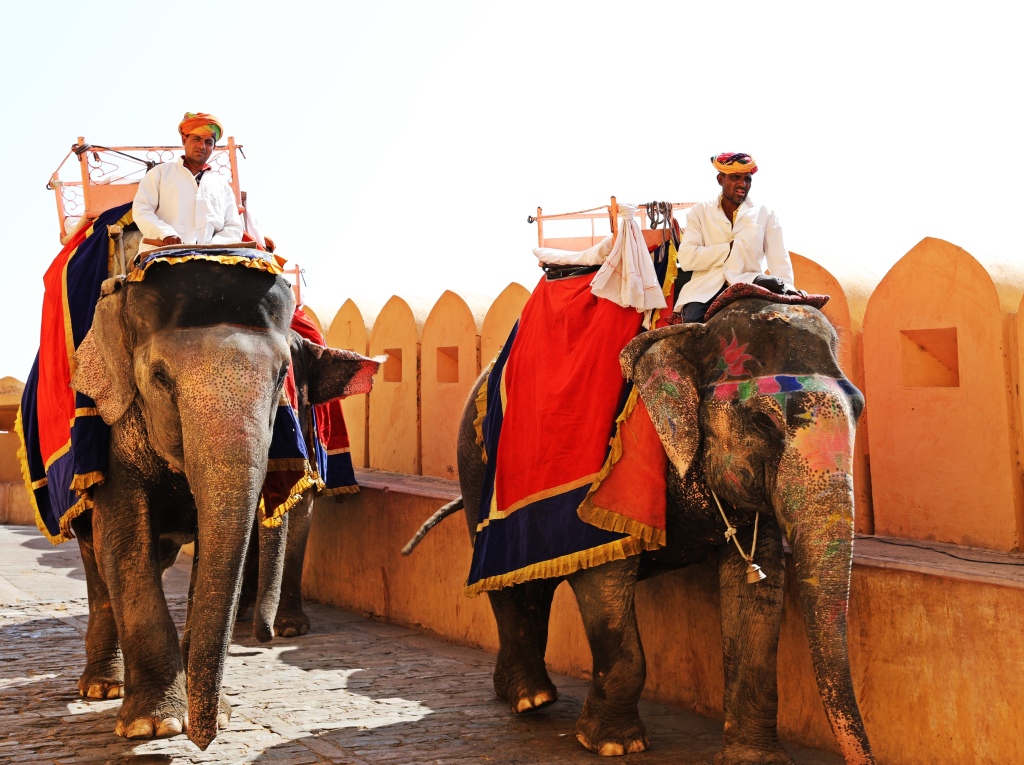
Elephants, Amer Fort 
Elephant entering through Sun Gate , Amer Fort
The fort has many lovely courtyards with gardens and overlooking balconies. In one courtyard is the beautiful, open-air Hall for Public Audience with large marble columns. Next to it is the elaborate gate of Ganesh Pol. It is colourfully painted with mughul style decorations on the walls, the gate and the small faux doors on either side. Beyond this gate is the Maharaja’s private quarters including the pretty white marble Jai Mandir. Inside Jai Mandir, is Sheesh Mahal also called The Hall for Private Audience. It’s an exquisite open-air room with mirrors and glittering paint covering the walls and ceiling.
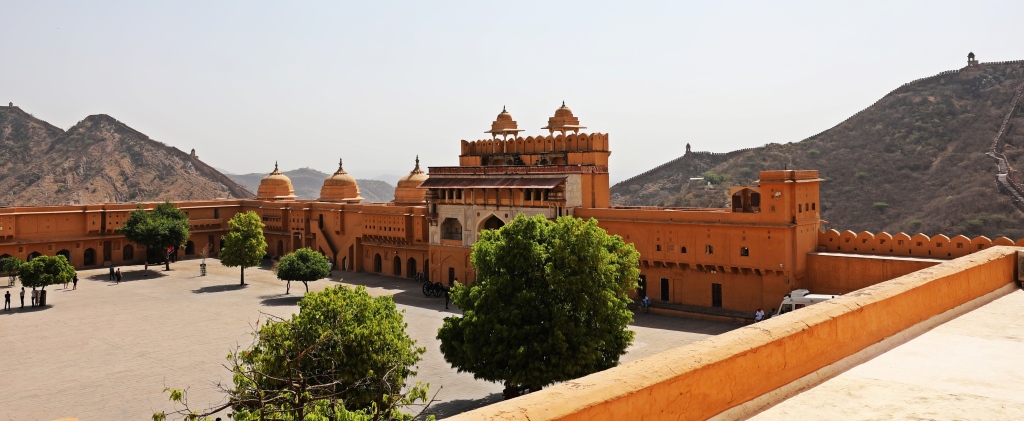
Jalebi Chowk and Sun Gate, Amer Fort 
Amer Fort 
Jalebi Chowk and Sun Gate with wall on the hill above, Amer Fort 
Gate, Amer Fort Gate 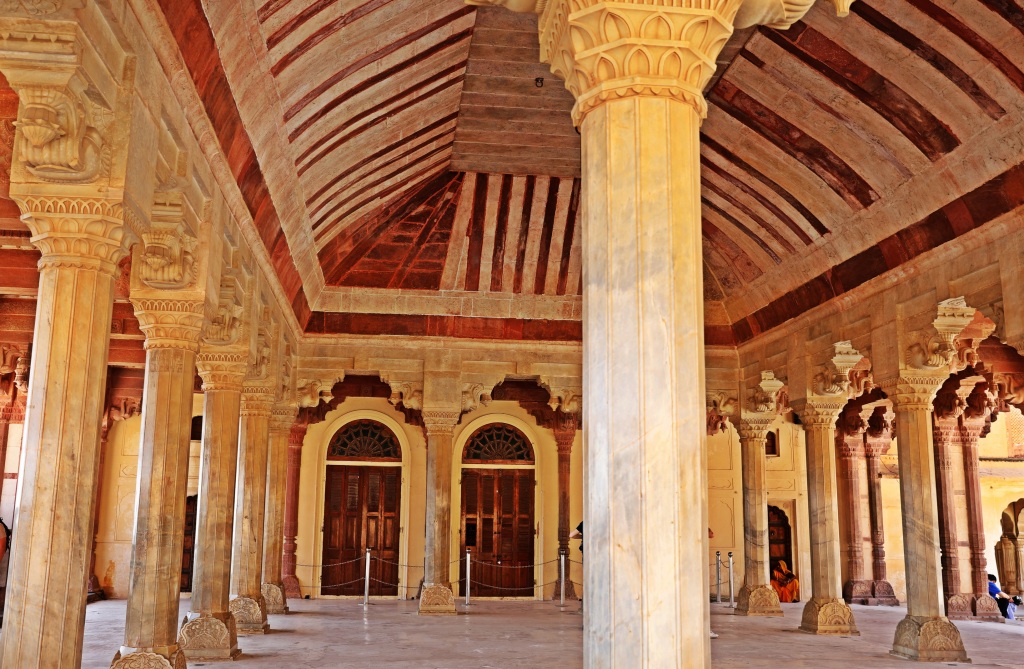
Diwan-e-Aam (Hall of Public Audience), Amer Fort 
Dil-e-Aaram Garden and Jai Mandir, Amer Fort 
Ganesh Pol, Amer Fort 
Ganesh Pol, Amer Fort 
Sheesh Mahal, Amer Fort 
Amer Fort, Jaipur 
Amer Fort with wall in background, Jaipur
One thing we haven’t seen before in an Indian fort is a toilet. Amer fort has over 100 toilets spread throughout the large fort. It did seem odd to find so many toilets in a country where now a days, public urination is a common occurrence.
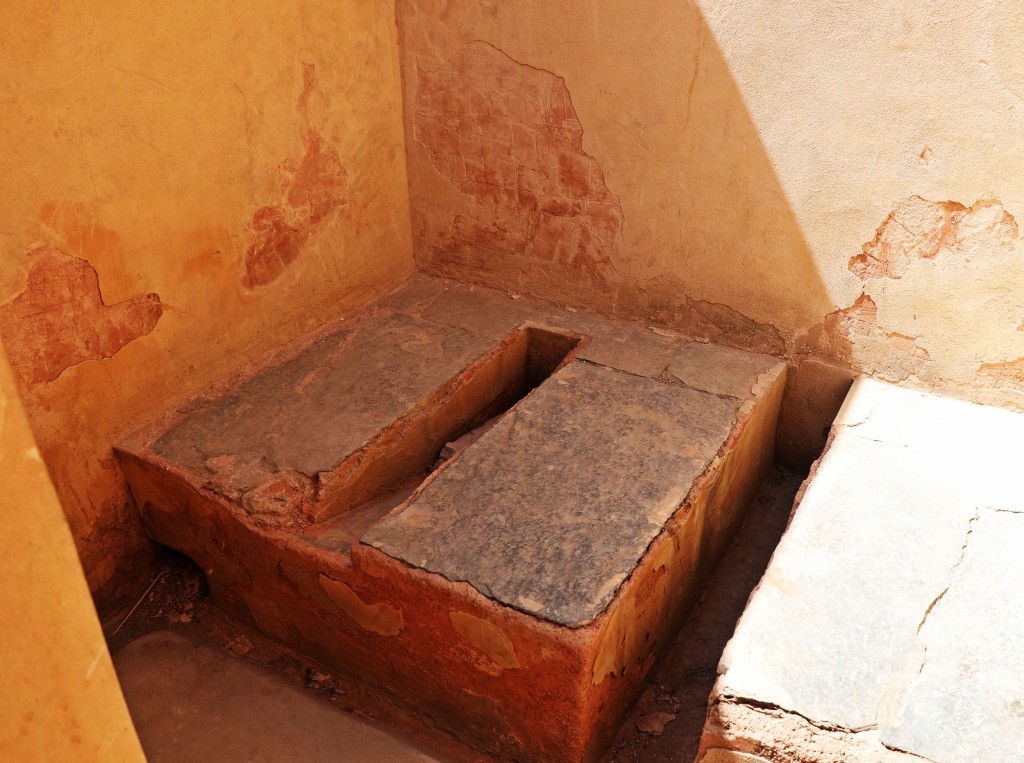
Toilet, Amer Fort
From Amer Fort you can see the surrounding mountains with the long, stone Amer Wall running along their ridges. The wall can be seen from many points and is an impressive 36 km long making it the second longest wall in the world. Built into a large section of the wall, right above Amer fort, is Nahargarh Fort. Nahargarh means ‘abode of tiger’ so is sometimes referred to as Tiger Fort. The first few sections of the fort are very basic as it was used as a defensive rampart. In this section there are many arrow windows and soldier’s lookouts. From the fort we had great views of the long Amer Wall with their round bastions. We found a secret passage that leads to a small palace at the far end of the fort. This palace, the passage and even a tunnel from Amer Fort were built as an emergency hideout for the Maharaja and his family in case of attack at Amer Fort. In the secret palace we found a lovely garden with marble chhatris which looked out on to the valley below.

Amer Wall 
Nahargarh Fort seen from Amer Fort 
Nahargarh Fort seen from Amer Fort 
Amer Fort and Amer Wall 
Nahargarh Fort 
Nahargarh Fort 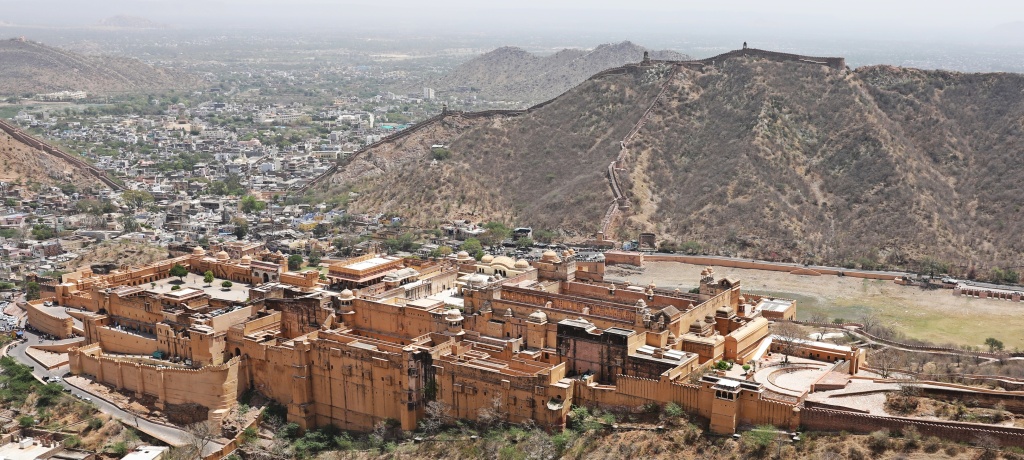
Amer Fort seen from Nahargarh Fort 
Amer Wall 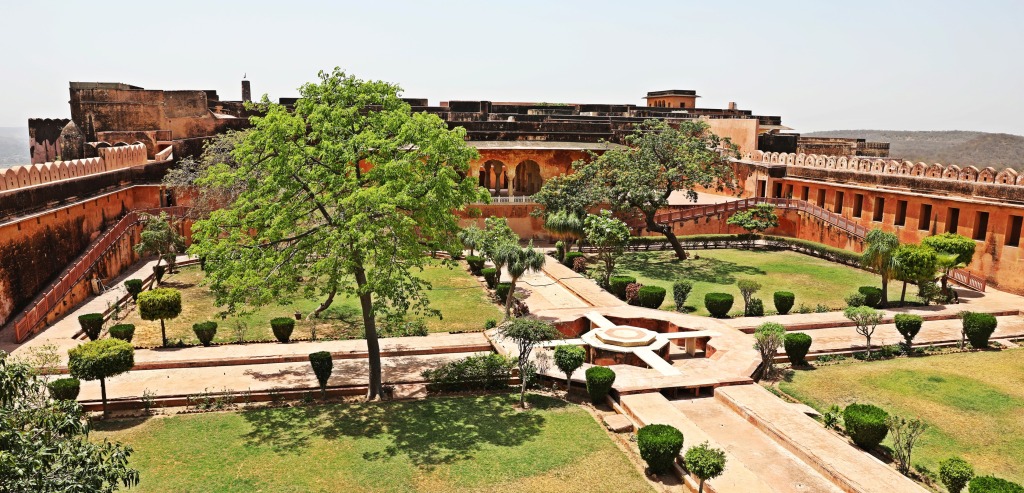
Secret palace, Nahargarh Fort 
Amer Wall with a bastion 
Amer Fort and walls seen from Nahargarh Fort
Below Amer Fort is the pretty Jal Mahal or Water Place. The palace is situated in the middle of Man Sagar (Lake) and appears to be floating. We can see one story of the sandstone palace above the water, but the palace has another four stories below water level. It was used as a summer resort for the Maharaja and his family. Nearby we saw another example of a Rajasthani stepped tank. Meena Ka Kund is a large square tank with multiple tiered symmetrical steps leading to the base of the tank. These tanks used to contain the water supply for the area and the steps allowed them to access the water at any water level. The symmetry of the geometric shapes makes these structures very interesting and photogenic. Whether it was because it was dry season, or the stepped tank is no longer used, the slimy green water at the bottom spoiled the view.
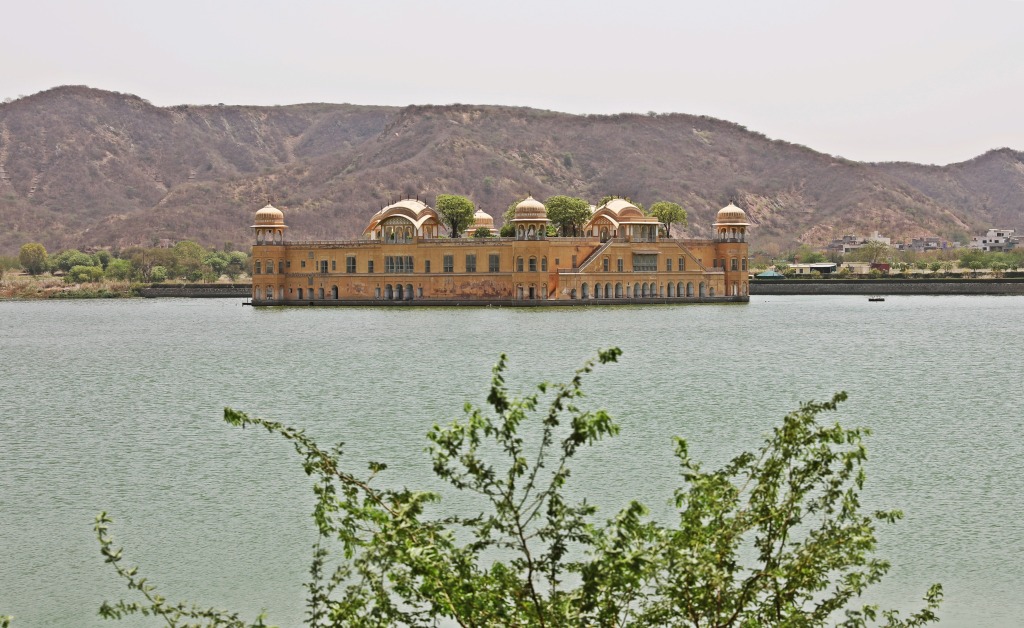
Jal Mahal, Jaipur 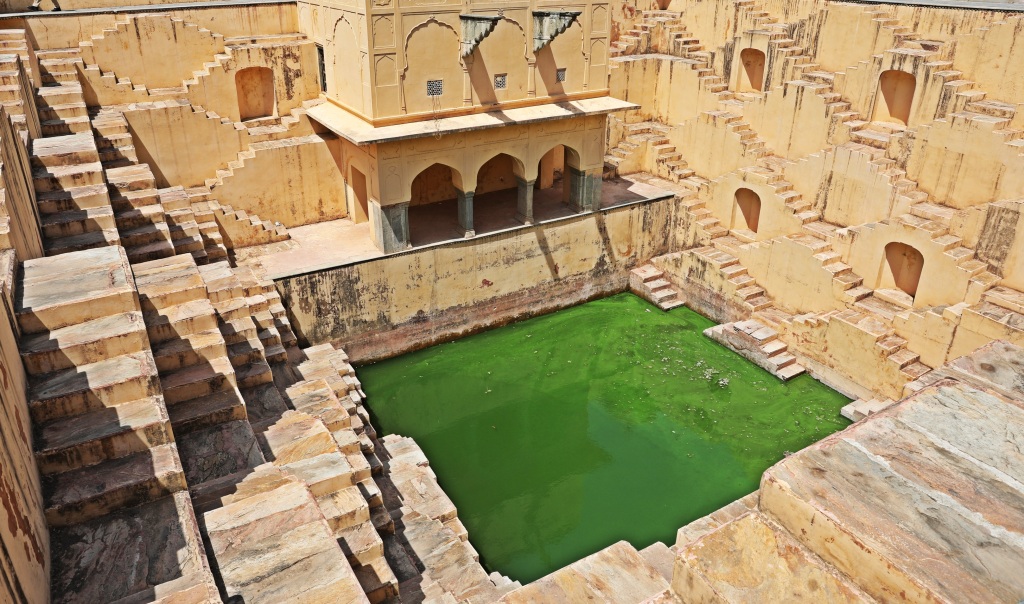
Panna Meena ka Kund Stepwell, Amer 
Panna Meena Stepwell, Amer
The Royal Gaitor is a small collection of cenotaphs for the Maharajas’ families, dating back to the 1700s. There are dozens of gorgeous white marble mausoleums with marble columns and domed roofs. A few are even multi leveled. It was especially nice to visit because it’s not included on most tours. After the busy palace it was nice to visit a quiet site with few tourists.

Royal Gaitor, Jaipur 
Royal Gaitor, Jaipur 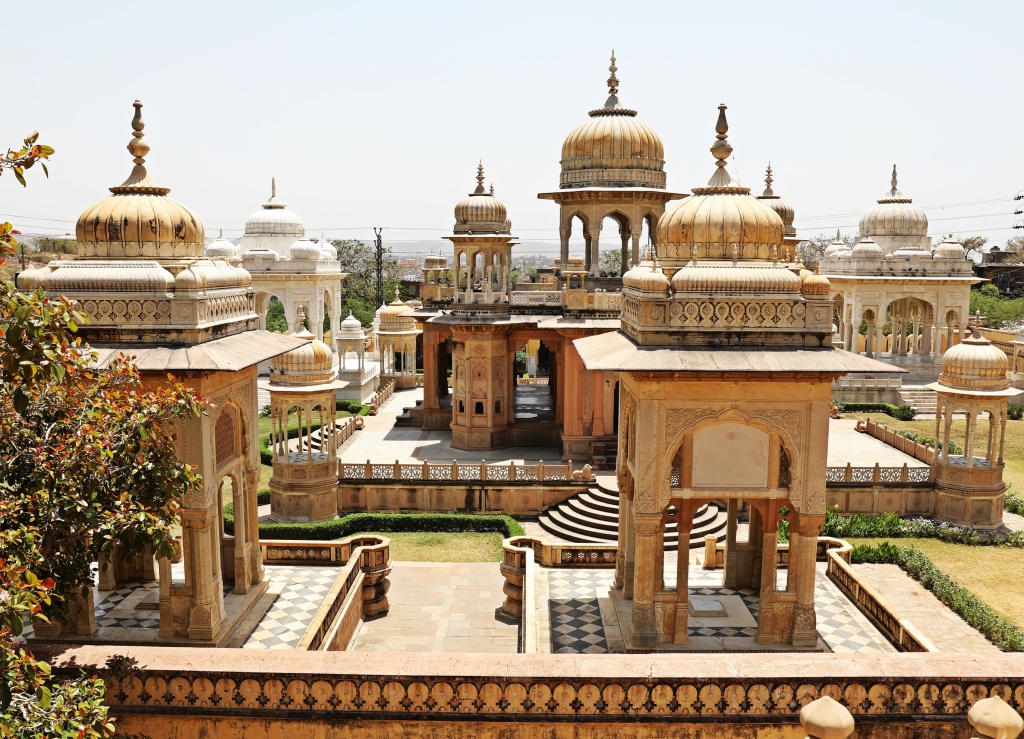
Royal Gaitor, Jaipur 
Royal Gaitor, Jaipur
We couldn’t leave Rajasthan without staying in one more historical hotel. Naila Palace is the former mansion of an important Jaipur family. It has a grand chandelier filled reception room with old portraits of the family and antique furniture. Our room had two sitting areas, marble floors and a large bedroom with a vaulted ceiling and stained-glass windows. We felt like royalty.

Naila Bagh Palace Hotel, Jaipur 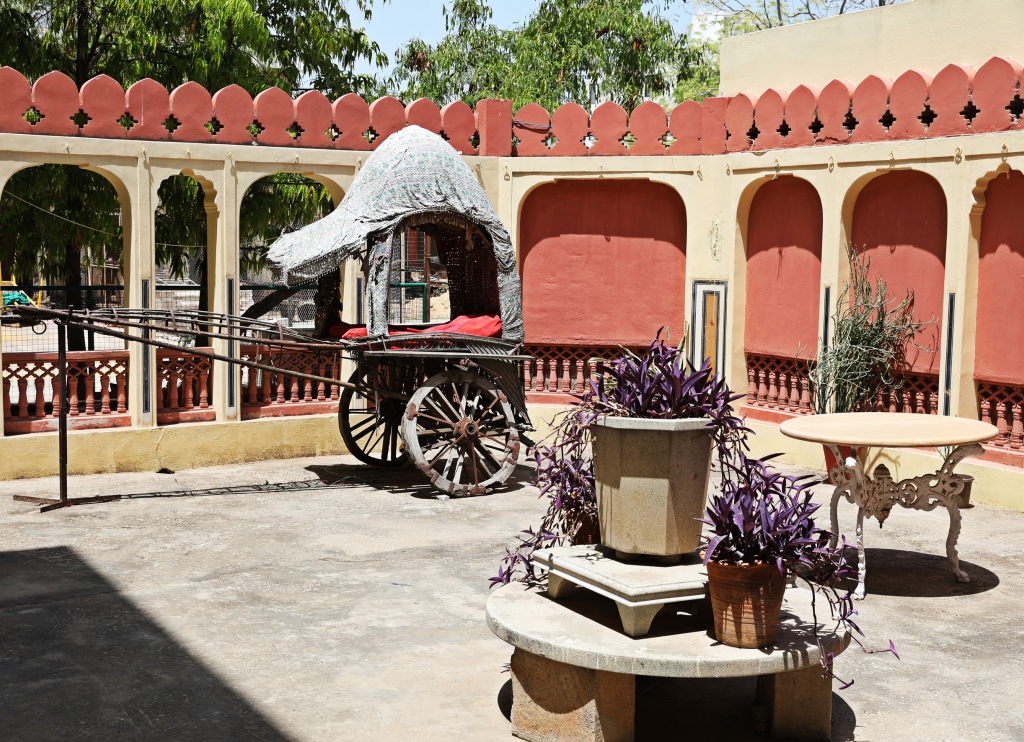
Naila Bagh Palace Hotel, Jaipur 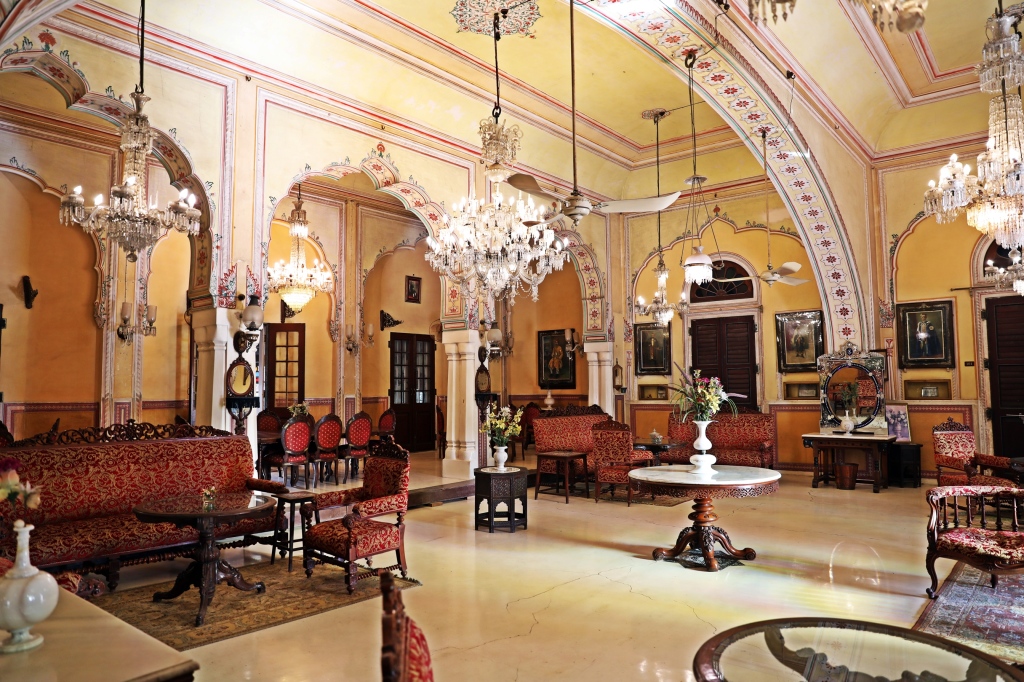
Naila Bagh Palace Hotel, Jaipur 
Naila Bagh Palace Hotel, Jaipur
Coming up next: Darjeeling and Sikkim’s Buddhist Villages
For extra pics from this trip go to Gallery/Western India. For extra pictures from other blogs go to Gallery at monkeystale.ca
To read about more of our adventures go to Destinations.
If you like what you read, please comment or share it using the links below
The architecture looks beautiful. You managed to capture some great shots. I’d love to visit India one day. But for now, I’ll live vicariously through your adventures.
LikeLiked by 2 people
Thanks! Yes, the old architecture in India is amazing, and especially in Rajasthan. You should try to visit if you can!! Thanks for reading.
LikeLiked by 2 people
Fabulous photos. We were in Jaipur in 2013 but the city centre was impassable after heavy rains so we missed a lot of it. We got to the forts though. Looks like a wonderful trip
LikeLiked by 2 people
It was a great trip. We were there at the end of the dry season, so there was no water and it was very hot, but at least we got to see everything.
LikeLike
The buildings are stunning and you’ve photographed them beautifully. That stepped tank reminds me of M.C. Escher drawings!
LikeLiked by 3 people
Thank you! That’s true, the stepped tanks have the stunning geometry that goes on and on! I looked at more of his drawings and there are a few with features that look like mughal chhatris, I wonder if he was inspired by India. Thanks for reading.
LikeLike
Rajasthan is one of the most incredible places I’ve been to. Your photos do a great job of taking us there. I forgot how impressive the Amer fort was until I saw your post. Thanks for taking us with you.
LikeLiked by 2 people
Thanks so much Jeff! We were so impressed by most of Rajasthan, and it’s very photogenic!
LikeLike
Wow, I’m once again blown away by the incredible architecture. I’m impressed that you managed to get photos of those gorgeous entrance gates without any people in the way. The Amer Fort and Water Palace are stunning. That’s funny about the toilets. I wonder why this one has so many?
LikeLiked by 2 people
I know, the architecture in Rajasthan is incredible and all very different from each other. We had to wait quite a while to take the gate pictures. At one, there was a selfie line (!!) which I stood in and then confused everyone when Richard took a picture of the empty gate. I have no idea why there were so many toilets, but it was pretty funny. The sad part is that they’re not that different from some of the toilets in asia today!!
LikeLiked by 1 person
Haha, I love that you confused those selfie takers! I don’t get this obsession (sounding like the old fart that I am).
LikeLiked by 2 people
Wow again, fabulous, and that Palace Hotel you stayed in looks stunning, somewhere we would love to stay when we visit Jaipur
LikeLiked by 2 people
Thank you so much! The hotel wasn’t too expensive and is on Booking.com. The one we stayed at in Udaipur was even nicer. And if you love staying in old mansions consider the Chettinadu region in Tamil Nadu when you go to India.
LikeLiked by 1 person
Some beautiful pictures here. I like the presentation style in your blog. Impressive.
LikeLiked by 1 person
Thank you so much!
LikeLike
You got some brilliant shots!!! Crowd free – perfect 😊 I love the look of that hotel room too, looks beautiful, you’d never get me out lol.
LikeLiked by 1 person
Thanks Cheryl, we were patient for the crowd free shots, as you know it is such a busy city. Jaipur was near the end of our trip so we treated ourselves to a higher end hotel (ie not budget) and it was completely worth it.
LikeLiked by 1 person
Lovely 😊x
LikeLike